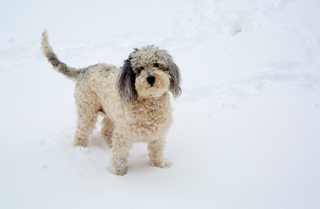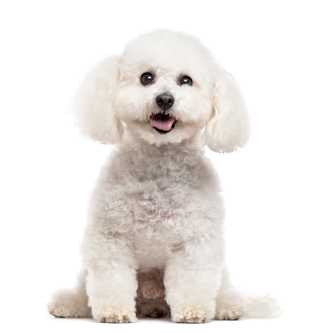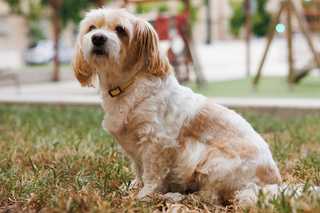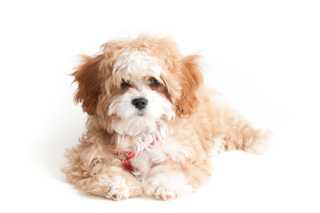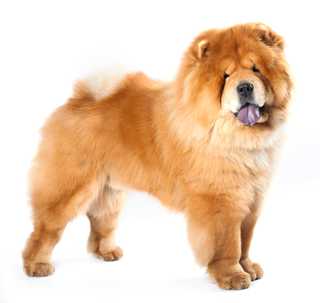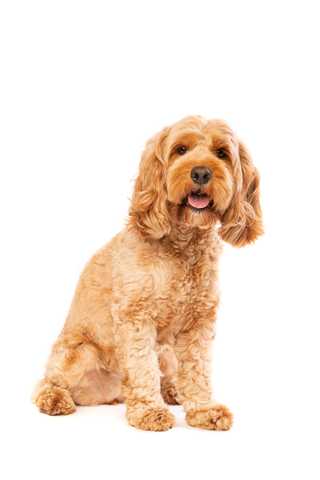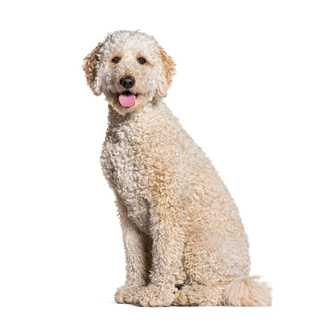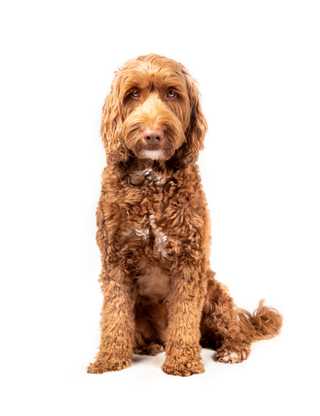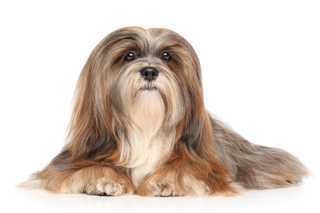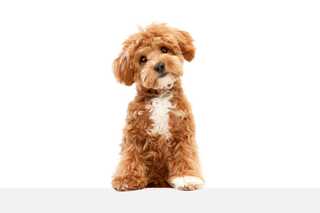
Note: While the breeds in this collection tend to be Teddy Bear Dogs, individual pets will vary. Please consult the adoption organization for details on a specific pet.
Teddy bear dog breeds may be small, but they have huge personalities and love to play and cuddle with their pet parents. Are you considering welcoming one of these adorable pups or just wanting to learn more about these cuddly dogs? Let’s explore the world of teddy bear dogs, covering popular breeds, their characteristics, temperament, a couple of training tips and frequently asked questions.
What is a Teddy Bear Dog or Puppy?
Are you wondering, “What dog breed is teddy bear?”
Chances are, you’ve seen dogs of many different small dog breeds and mixes that brought out the “gotta-cuddle” impulse in you. And you may have also heard people talking about “teddy bear dogs” or “teddy bear puppies.” A teddy bear dog is not a single breed. This unofficial collection of canines includes any adorable pup with soulful shoe-button eyes, a boop-able nose and fluffy or plush soft fur. They vary in size, although when people say they are looking for a dog that makes them think of a teddy bear, they usually envision a small dog that can join them on their lap. However, it’s important to remember that many small dogs can fill a room with their big personalities!
The teddy bear dog breed can encompass various cuddly dog breeds, including mixed-breeds and purebreds. A teddy bear dog features fluffy hair, which endows them with the cuddly appearance of a teddy bear. Some teddy bear dog breeds have been around since the late 1990s.
Teddy bear dog breeds possess adorable charisma, and their teddy-like nature is delightful. Some teddy bear dogs are purebred, like the Toy Poodle and the Shih Tzu. Others are mixed breeds, like the Pomsky, the Sheepadoodle, the Schnoodle, the Shorkie, the Pomchi, the Cavapoo, the Malshi and the Maltipoo.
Characteristics may vary, especially amongst mixed breeds. Mixed-breed dogs may take after one of their parents, or they may be a blend of features from both of their parent’s breeds. The most common characteristic of all teddy bear dogs is that they are all heartwarming.
Popular Teddy Bear Dogs
Because teddy bear dogs include crossbreeds and purebreds, the appearance and personality of the dogs we’ve chosen to introduce to you here will vary. This list of some of the more popular teddy bear dogs focuses on dogs who tend to elicit the “aww” response in adopters who cherish the cute in dogs. Remember, the cuddliest small dog in the crowd could also have a spitfire personality! Here are just 10 breeds and mixes, small and large, that are often called the “teddy bears” of dogdom.
Purebred Teddy Bear Dogs
Chow Chow

The Chow Chow is an East Asian dog whose lion-like physique may have been the model for the ancient statues that guard Buddhist temples. The thick fur and woolly undercoat provide insulation from the cold and covers a strong muscular frame. In the 1800s, Queen Victoria’s interest in the Chow Chow helped draw attention to the breed. This breed is cautious when meeting new people and pets but is known to be devoted and loyal to their family.
Lhasa Apso

The Lhasa Apso is an ancient breed that guarded the Buddhist monasteries of Tibet and arrived in America around 1930 as gifts from the thirteenth Dalai Lama. This familiar family pet has naturally long, flowing fur. The coat is often trimmed into a short, pert “teddy bear” cut that reveals an alert and expressive gaze. Despite its lapdog appearance, the Lhasa is independent and loves a good romp or game. These characteristics make the Lhasa an excellent small companion in adventure.
Pomeranian

The diminutive Pomeranian has strong sled-dog ancestors. This foxlike small dog has a rounded body, small ears, a thick double coat and a curled tail. Their soft undercoat, puffy outercoat and alert button eyes bring a stuffed pet to mind. Although the Pomeranian may be toy-sized, their energy and playfulness are near the top of the scale.
Shih Tzu

The Shih Tzu has been a lap dog for over a millennium with Chinese royalty. Their name translates to “little lion” in Mandarin. They’re affectionate, friendly, playful and happy – just easy to get along with – and quickly make friends with humans and many pets. Shih Tzus’ regal-looking locks are usually clipped short, making their coat easy to maintain overall.
Mixed Teddy Bear Dog Breeds
Cavachon

The less-shedding fur, compact size and average energy level make the cute Cavachon an excellent family pet. A newly developed mixed breed, the Cavachon is a Cavalier King Charles Spaniel and Bichon Frise crossbreed that appeared around 1996 in the United States. The Cavachon is outgoing and intelligent, and they respond well to positive-based training. Their size and adaptability make them a good choice for any home where they get exercise, grooming and love.
Cavapoo

The Cavapoo originated from the intentional breeding of the Cavalier King Charles Spaniel and Poodle, which began in the late 1990s in Australia, although accidental litters likely occurred before then. Cavapoos are so happy in the company of people—one reason why they are so popular! The Cavapoo is just as happy playing a game with you in the yard as they are snuggling up next to you on the couch after the game has worn them out. These intelligent little teddy bear dog breeds will enjoy learning tricks to challenge their sharp minds.
Cockapoo

Originating in the 1960s, this mix of Cocker Spaniel and Poodle was one of the first intentional canine crossbreeds, popularly called “designer dogs.” The first occurrences of the Cockapoo were likely accidental. Still, as they gained a positive reputation as family dogs, breeders began intentionally combining the two breeds. The Cockapoo is an extremely friendly, happy dog that is people-oriented and willing to please. Intelligent, with a moderate energy level, you’ll find that this dog is up for any lesson or game and tends to accept other pets in the home.
Goldendoodle

This mix breed of Golden Retriever and Poodle parentage is an excellent fit for a family who loves to play. The Goldendoodle did not appear in America until the 1990s, but since then has gained popularity due to their happy teddy bear dog personality and lower-dander coat and as a larger family-dog alternative to the Cockapoo. With two active breeds in the bloodline, the Goldendoodle has a high energy level combined with people-pleasing smarts. Expect to devote some time each day exercising and training a Doodle.
Maltipoo

The Maltipoo’s exact date of origin is unknown, and they were bred in the United States to be a small, affectionate companion dog. This mixed breed dog of Maltese and Poodle parents is an all-around family dog, happy at play, in a lap and often enjoys children and other pets. The Maltipoo was conceived as a companion dog for people with allergies. While no dog is entirely hypoallergenic, the Maltipoo may inherit a tendency to have less dander from the Poodle parent, making them a possible choice for a family trying to manage allergies.
Morkie

A Morkie is a crossbreed between a Maltese and a Yorkshire Terrier, and at around 13 pounds, is a teddy-bear option for someone partial to smaller canines. The Morkie bounced into family homes in the late 1990s, although accidental breeding likely appeared before then. Morkies have a reputation for tons of character, energy, intelligence, a bit of stubbornness and a reliable bark, all wrapped up in a tiny and cute canine package.
Pomsky

The Pomsky is bred via artificial insemination and combines the fun-loving nature of the Siberian Husky with a smaller size inherited from the Pomeranian. The first official record of the energetic Pomsky was in 2012 in the United States. With sled-dog ancestors in both parent breeds, the Pomsky has inherited energy, drive, and a soft, fluffy double coat. The coloration of a Pomsky can vary and is found in gray, red, black, brown and cream. Markings can be husky-like, solid or even particolored.
Teddy Bear Dog Characteristics and Temperament

Some common teddy bear dog characteristics include:
- Friendly demeanor
- Enjoys cuddling and affection
- Sweet and mild-tempered
- Enthusiastic to please
- Easy-to-train
- Low shedding
- Intelligent
Teddy bear breeds may potentially suffer from dog separation anxiety. Being left alone may lead to problem behaviors if a dog turns destructive out of anxiety. For this reason, crate training may be practical for these breeds. Also, reward-based training techniques can help to correct unwanted behavior and help your dog feel more at ease.
Teddy Bear Dog Training and Care
Are you wondering, “Are teddy bear dogs easy to train?” Yes, with a consistent routine and praise, they can be. Teddy bear dog breeds are particularly smart. With their intellect, they may often enjoy the mental stimulation of training or learning new tricks. These brilliant dog breeds invoke a beautiful connection in their pet parents because of their loyalty and camaraderie.
If a teddy bear dog barks excessively, how often they continue to do so will depend on several factors. Criteria affecting a dog’s barking stem from their breed mix, behavior training, socialization opportunities and whether positive reinforcements are used.
Some teddy bear dog breeds may be unhappy being alone. To avoid problems with separation anxiety, which can cause excessive barking, begin thoughtful socialization and training at puppyhood for teddy bear puppies. Crate training is also a good way to keep your dog at ease. Regarding how to crate-train a teddy bear dog, as with mostly any dog, gently and gradually introduce them to the crate, making sure the crate is large enough and comfortable enough for your fuzzy teddy bear dog, placing comfortable bedding and possibly a toy in the crate space.
A fuzzy dog will need added grooming care. All that cuteness comes with extra brushing and trimming care and may require a regular trip to a professional groomer.
Teddy Bear Dog Grooming Needs
The frequency of grooming and brushing at home varies per breed. If you choose a breed that sheds a lot, they may be more high-maintenance and need more grooming and brushing daily.

If your teddy bear dog is a breed with medium to long, straighter hair, you can ask a professional groomer for a puppy cut. A puppy cut, also known as a “summer cut,” involves your pup getting their hair cut around one inch long. Think of your favorite teddy bear from when you were a kid. This cut could give your dog more of a classic plush, teddy bear look with the shorter hair length.

You can also keep your teddy bear dogs with longer hair luscious if you brush their coat at least two to three times weekly. If you don’t, their coat can become tangled and matted, which can be very uncomfortable for the dog, sometimes causing very painful hotspots on their skin that could transform into skin infections.
So that their fur stays shiny, bathe your teddy bear monthly. It’s also a good idea to clean their ears and brush their teeth when possible.
Teddy Bear Dog Health
Avoid inadvertent injury to your dog by avoiding sleeping alongside toy-breed and small-breed dogs. Take extra care when they’re around. Smaller dog breeds are often better around older kids and in homes where someone is home often. Overall, teddy bear dog breeds have exercise requirements, and daily walks and playtimes are essential to help keep them healthy and happy.
The teddy bear dog’s lifespan tends to be around 12 to 16 years. However, teddy bear dog breeds have health concerns specific to their background that pet parents shouldn’t overlook. Talk to your veterinarian to determine what those concerns are for your teddy bear dog.
Teddy Bear Dog FAQs
Q: How big are teddy bear dogs?
Answer: How big a teddy bear dog gets depends on the teddy bear dog breed. On average, a full-grown teddy bear dog’s size is no larger than a foot in height and about twelve pounds.
Q: What is a “designer dog?”
Answer: Some teddy bear dogs—think Goldendoodle—are mixed breeds originally bred from popular people-loving purebred dogs to highlight specific attributes, like the Golden Retriever’s friendliness and the Poodle’s curly fur and intelligence.
Q: Are teddy bear dogs hypoallergenic?
Answer: Most teddy bear dog breeds occur because of a mix of two low-shedding dogs. While these hybrid dog breeds may still produce small amounts of dander, they have decreased potential to shed. Some teddy bear dog breeds may be suitable for pet parents with allergies. Yet, a pet parent with allergies looking to adopt should spend time with the animal to see whether they’re a good fit for their allergies.
The hair and dander of each teddy bear breed vary. For the most part, teddy bear dog breeds are low shedding. A Poodle or a Poodle mix may suit pet parents with allergies because they’re low-shedding dogs. As a result, Poodle mixes and Poodles are both excellent service companions for allergy sufferers.
Q: Do teddy bear dogs bark a lot?
Answer: A dog suffering from separation anxiety is prone to bark. Pet parents can avoid separation anxiety by crate training, sticking to regular routines, playing the radio while they’re gone and gradually increasing absence time.. Pet parents can avoid separation anxiety by crate training, sticking to regular routines, playing the radio while they're gone and gradually increasing absence time.
Q: Are teddy bear dogs available for adoption at animal shelters?
Answer: Absolutely. Because these dogs are popular pets, they are often taken to shelters and rescues when they are found as strays or surrendered by their previous owners, who might not be able to keep them due to changes in their lives. There are even rescues dedicated to rehoming Chow Chows, Goldendoodles, Cockapoos and other mixed breed or purebred teddy-bear-like dogs.
Q: Are teddy bear dogs lap dogs?
Answer: While every teddy bear mix or breed looks huggable, they are intelligent, active dogs with independent personalities. While they are loyal and happy to nap at your side, they also need regular exercise and love an adventure. Some breeds may be lap dogs, while others may not.
Find Your Perfect Teddy Bear Dog

Potential pet parents interested in adopting a teddy bear dog should consider the following:
- Review Dog Breeds: General dog breed information is a great place to start considering which breed may be your pet match. Remember: each pet is an individual. For teddy bear dogs who are a mix of two breeds, like the Cockapoo, Cavachon or Goldendoodle, you will want to learn as much as possible about both parent breeds.
- Consider Your Needs: Review your household and your individual needs.
- Visit Local Shelters: Visiting your local animal shelter and meeting a dog can be an excellent way to explore your perfect pet match.
- Review Adoptable Pets Online: Help an adoptable dog find a forever home on Petfinder and search for adoptable pets in your area. Search for a dog by fur length if the cuddle factor is what you are looking for, but remember that even a short-furred dog can have that soulful and sweet “teddy bear” look.
Owning a teddy bear dog can bring immense joy and companionship to your life. These affectionate, cuddly breeds often make wonderful family pets with playful personalities and loving nature.
Are you considering adding teddy bear dog breeds to your home? Explore local rescue resources like ours here at Petfinder and find your perfect furry friend. Use this article as a starting point to research more information, such as teddy bear dog costs in your area and more, to find the best match for your lifestyle and preferences.
For more expert tips about your new dog’s health, explore our other dog care articles.
